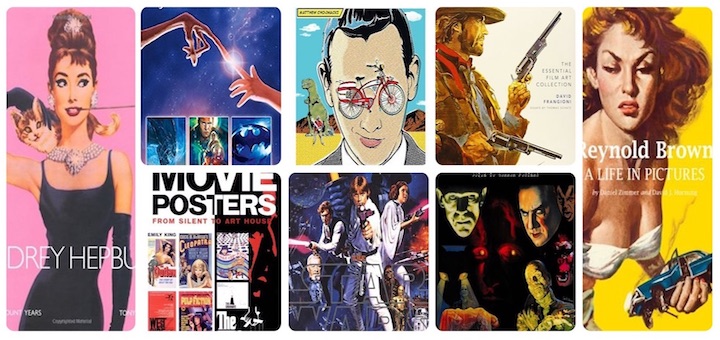Vintage movie posters are more than just promotional materials; they are captivating works of art that reflect the cultural and historical context of the films they represent. Collecting vintage movie posters offers a unique opportunity to own a piece of cinematic history, while also appreciating the artistic craftsmanship that went into their creation. Whether you're a seasoned collector or new to the hobby, understanding the nuances of vintage movie posters can greatly enhance your collecting experience. This guide will provide you with essential insights and tips on starting and growing your collection of vintage movie posters.

Why Collect Vintage Movie Posters?
Collecting vintage movie posters can be an immensely rewarding hobby for several reasons. Firstly, they offer a tangible connection to the past, capturing the essence of different eras in film history. Vintage posters often feature stunning artwork, intricate designs, and unique typography that distinguish them from modern promotional materials. Additionally, these posters can be valuable investments, as their rarity and historical significance can increase their worth over time. For film enthusiasts, owning vintage posters is a way to celebrate and preserve the legacy of their favorite movies and filmmakers.
Vintage movie posters also offer a sense of nostalgia and a way to appreciate the evolution of film advertising. From the hand-painted designs of the early 20th century to the bold, graphic styles of the 1960s and 70s, each poster tells a story about the film industry and its changing aesthetics. Collecting these posters allows you to explore the rich visual history of cinema and build a collection that reflects your personal taste and interests.
Identifying Authentic Vintage Posters
One of the most important aspects of collecting vintage movie posters is ensuring their authenticity. Authentic posters were typically produced at the time of the film's release and were used for promotional purposes in theaters. Here are some tips to help you identify genuine vintage posters:
- Printing Details: Examine the printing techniques and materials used. Vintage posters often have specific characteristics, such as stone lithography for older posters or offset printing for mid-century designs. Look for printers' marks, studio logos, and original folds, which are common in authentic posters.
- Size and Format: Familiarize yourself with the standard sizes and formats of vintage posters from different countries and eras. For example, one-sheets (27x41 inches) were common in the United States, while French posters often came in larger sizes like 47x63 inches. Knowing these details can help you spot reproductions or non-authentic items.
- Condition and Aging: Genuine vintage posters will show signs of aging, such as slight discoloration, edge wear, or minor tears. Be cautious of posters that appear too pristine or have modern materials, as these could be reproductions.
When purchasing vintage posters, buy from reputable dealers, auction houses, or established online marketplaces. Ask for provenance and certificates of authenticity whenever possible to ensure you are getting a genuine piece.
Grading and Condition of Vintage Posters
The condition of a vintage movie poster is a critical factor in determining its value and desirability. Collectors use a grading system to describe the condition of posters, ranging from mint to poor. Understanding these grades will help you make informed decisions when buying or selling posters. Here are the common grades and their descriptions:
- Mint (M): A mint condition poster is virtually flawless, with no visible defects. These posters are extremely rare and highly sought after by collectors.
- Near Mint (NM): Near mint posters have minimal imperfections, such as tiny creases or very light wear, that are not immediately noticeable.
- Very Fine (VF): Very fine posters show minor signs of wear, such as small tears, slight creases, or minor discoloration, but remain in excellent condition overall.
- Fine (F): Fine posters have more noticeable flaws, including larger tears, creases, or some fading, but are still visually appealing and collectible.
- Very Good (VG): Very good posters display significant wear, such as multiple tears, creases, or stains, but retain their overall design and appeal.
- Good (G): Good posters show considerable damage and wear, but may still be of interest to collectors, especially if they are rare or historically significant.
Properly storing and preserving your posters can help maintain their condition and value. Use acid-free materials, such as archival sleeves and backing boards, to protect posters from environmental damage. Store them in a cool, dry place away from direct sunlight to prevent fading and deterioration.
Where to Find Vintage Movie Posters
Finding vintage movie posters can be an adventure in itself. There are several sources where you can discover authentic and valuable posters for your collection:
- Online Marketplaces: Websites like eBay, Heritage Auctions, and Posteritati offer a wide range of vintage movie posters. These platforms allow you to browse and purchase posters from sellers around the world.
- Specialty Stores: Many cities have stores that specialize in movie memorabilia, including vintage posters. Visiting these stores can provide you with the opportunity to see the posters in person and get advice from knowledgeable staff.
- Auctions: Both online and in-person auctions can be excellent sources for rare and valuable posters. Keep an eye on auction house websites and local event listings for upcoming sales.
- Flea Markets and Antique Shops: Sometimes, hidden gems can be found in flea markets and antique shops. These places often have unique and vintage posters at reasonable prices.
When buying posters, always verify the authenticity and condition of the items. Look for reputable sellers and check for details such as studio logos, print dates, and original folds or marks. Ask for provenance and certificates of authenticity whenever possible.
Framing and Displaying Your Collection
Properly framing and displaying your vintage movie posters is essential for both their preservation and your enjoyment. Here are some tips to help you showcase your collection:
- Framing: Use high-quality, acid-free materials for framing to prevent damage and deterioration. UV-protective glass or acrylic can help protect posters from fading due to sunlight exposure. Ensure the frame is sturdy and properly sealed to keep out dust and moisture.
- Display: Choose display areas that are free from direct sunlight and excessive humidity. Rotating your posters periodically can prevent prolonged exposure to light and maintain their condition. Displaying posters in themed groups or by genre can create a visually appealing and cohesive look.
- Storage: If you have more posters than you can display, store them in a cool, dry place using archival sleeves and backing boards. Rolled posters should be stored in tubes designed for archival storage to prevent creasing and damage.
Displaying your posters allows you to enjoy their beauty and share your passion with others. Proper framing and storage techniques will help preserve the condition and value of your collection for years to come.
Building and Expanding Your Collection
As you gain experience in collecting vintage movie posters, you may want to expand your collection in various ways. Here are some strategies to consider:
- Focus on Specific Genres or Eras: Narrowing your focus to specific film genres, directors, actors, or time periods can help you build a more cohesive and meaningful collection. For example, you might concentrate on classic horror posters from the 1930s or sci-fi posters from the 1950s.
- Seek Out Rare and Limited Editions: Rare and limited-edition posters can add uniqueness and value to your collection. These posters often have historical significance or feature special artwork.
- Explore International Posters: Movie posters from other countries can offer different designs and perspectives on your favorite films. International posters can be a great way to diversify your collection and discover new artists and styles.
- Join Collector Communities: Engaging with other movie poster collectors can provide valuable insights, resources, and opportunities to buy, sell, or trade posters. Online forums, social media groups, and collector conventions are excellent places to connect with fellow enthusiasts.
- Invest in Poster Preservation: As your collection grows, consider investing in professional preservation and restoration services for valuable or damaged posters. This can help maintain their condition and increase their longevity.
Collecting vintage movie posters is a fascinating and rewarding hobby that combines a love of cinema with an appreciation for art and history. By understanding the nuances of vintage posters, identifying authentic pieces, and properly storing and displaying your collection, you can build a valuable and meaningful collection that reflects your passion for film. Whether you're a seasoned collector or just starting out, the world of vintage movie posters offers endless opportunities for discovery and enjoyment. Happy collecting!
